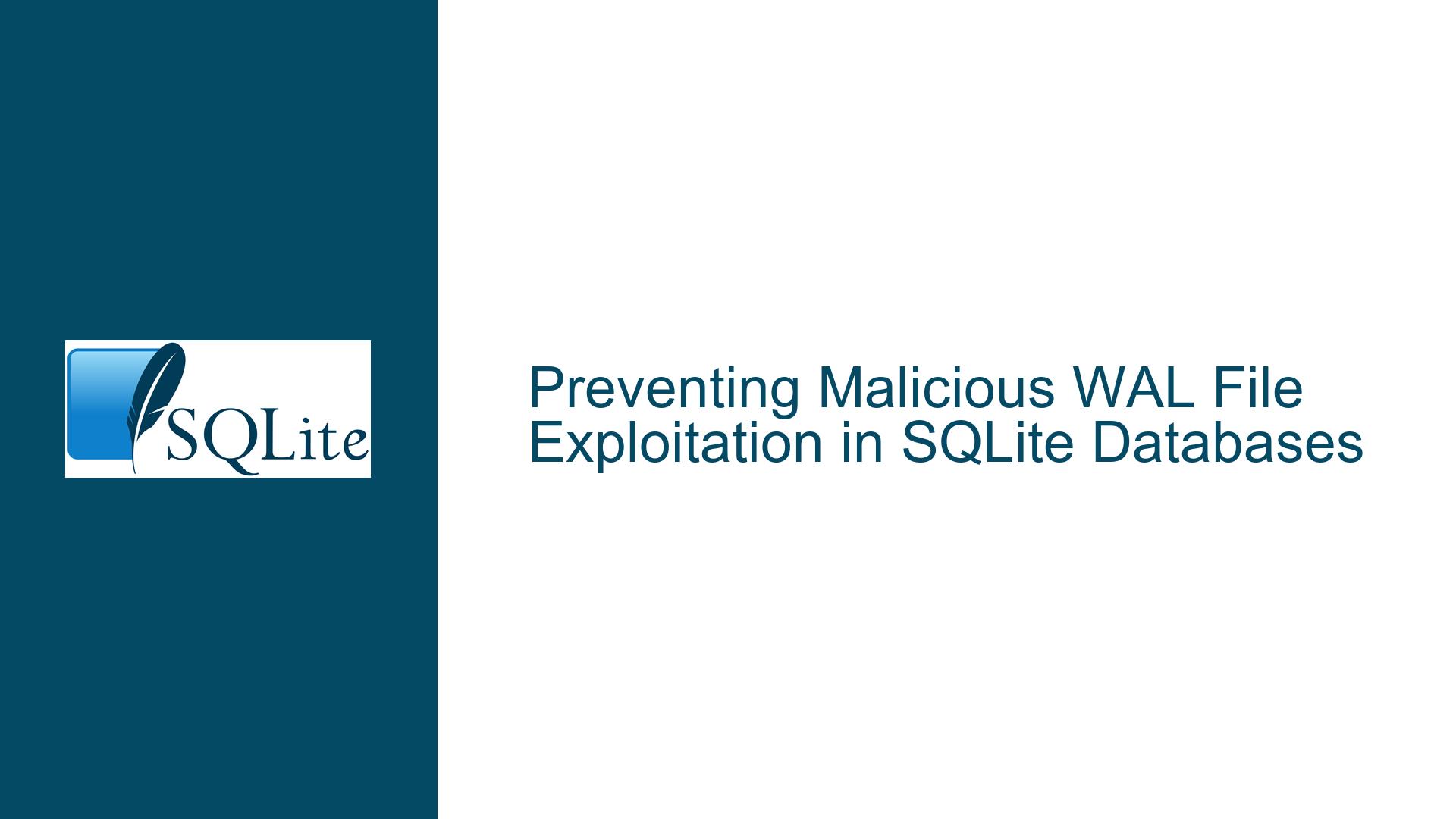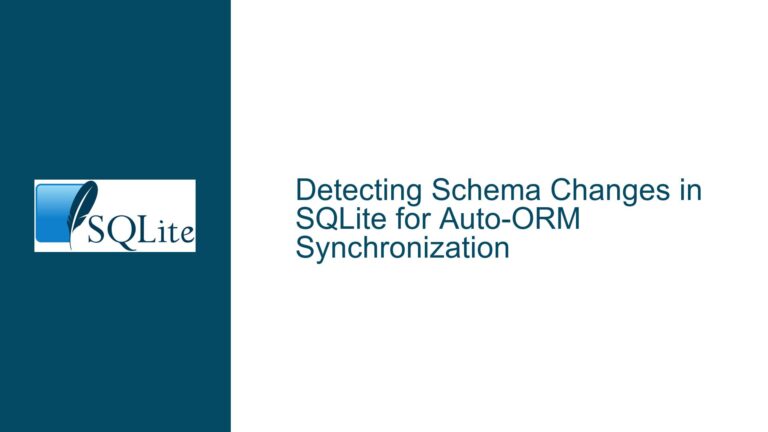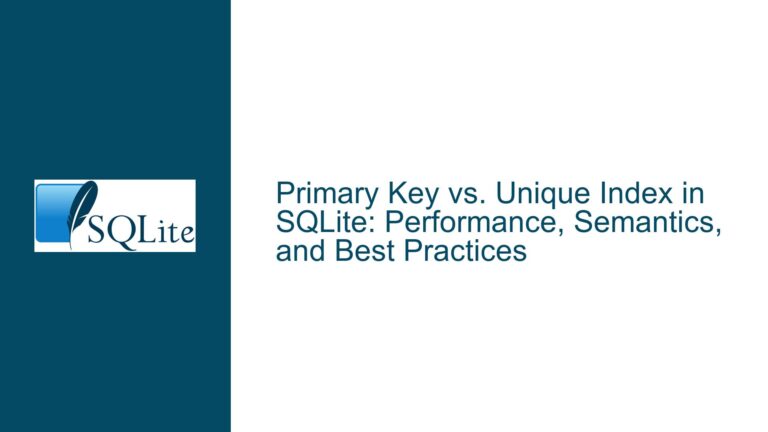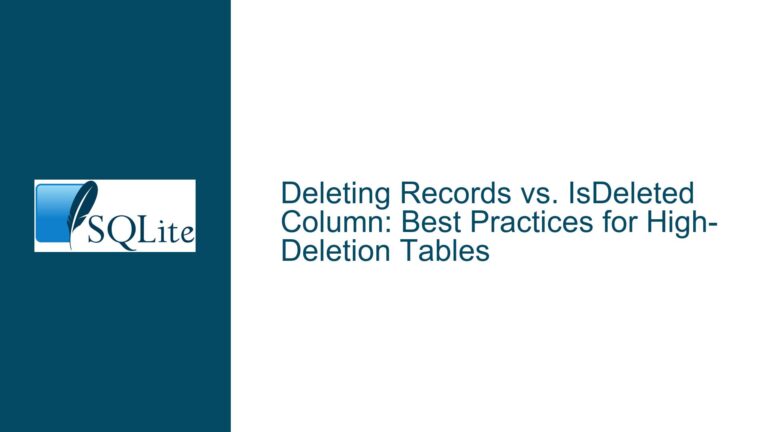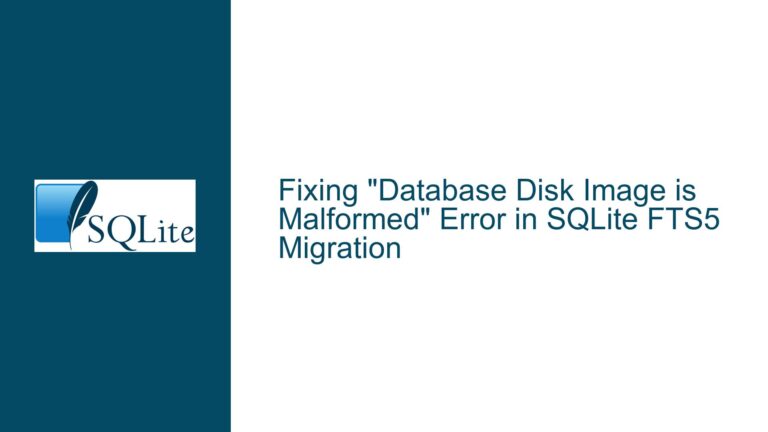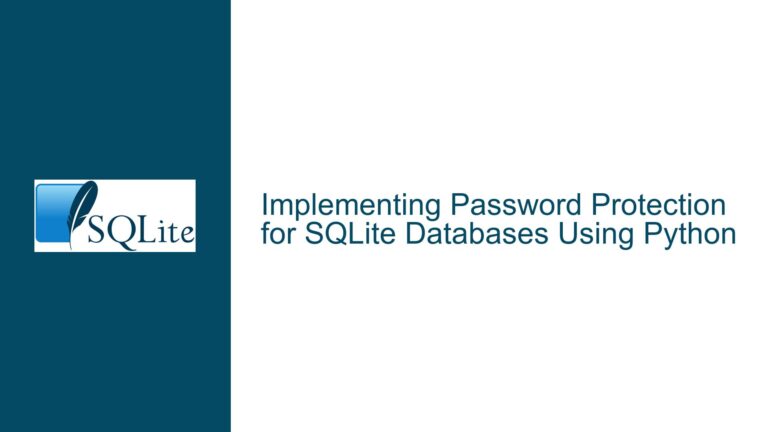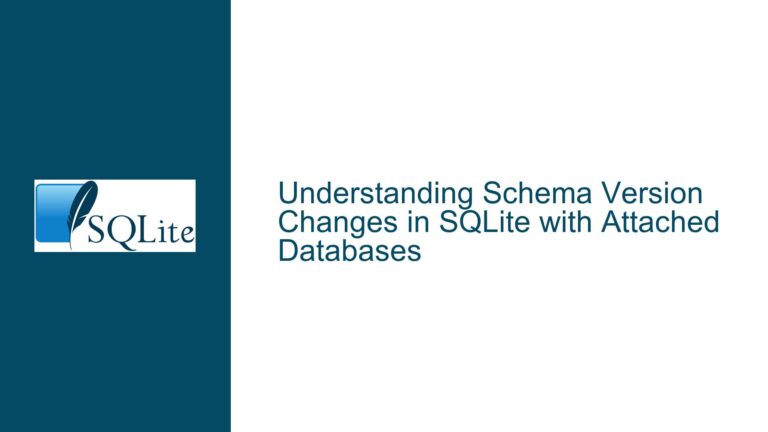Preventing Malicious WAL File Exploitation in SQLite Databases
SQLite WAL File Vulnerability and Security Implications
SQLite is a lightweight, serverless database engine widely used in applications requiring local data storage. One of its key features is the Write-Ahead Logging (WAL) mode, which enhances performance by allowing concurrent read and write operations. However, the WAL mode introduces a potential security vulnerability: the risk of malicious WAL files being introduced into the database environment. This vulnerability arises when an attacker gains access to the database file and its associated WAL file, allowing them to manipulate the database state by injecting a malicious WAL file. This issue is particularly concerning in multi-user environments where database files are shared or accessible by multiple applications or users.
The core of the problem lies in SQLite’s flexibility in handling WAL files. By default, SQLite allows any connection to switch the journal mode to WAL using the PRAGMA journal_mode=WAL command. If an attacker can place a malicious WAL file in the same directory as the database file and switch the journal mode to WAL, the database may load the malicious WAL file, leading to data corruption or unauthorized modifications. This scenario is exacerbated when the database file is stored in a shared or insufficiently secured directory, allowing unauthorized users to interact with the database files directly.
The security implications of this vulnerability are significant. A malicious WAL file can alter the database’s state, leading to data integrity issues, unauthorized data access, or even complete data loss. Furthermore, the attack surface is broadened when considering that SQLite databases are often embedded in applications with varying levels of security controls. For instance, a desktop application using SQLite may store its database in a user-accessible directory, making it susceptible to such attacks if proper file system permissions are not enforced.
File System Access and SQLite’s Security Model
The primary defense against malicious WAL file exploitation lies in securing the file system where the SQLite database resides. SQLite operates under the assumption that the underlying file system is secure and that only authorized processes can access the database files. This assumption is critical because SQLite itself does not provide mechanisms to enforce file system-level security. Instead, it relies on the operating system’s file permissions and access controls to restrict access to the database files.
When an attacker gains access to the file system containing the SQLite database, they can manipulate the database files directly, bypassing any application-level security measures. For example, an attacker with write permissions to the directory containing the database file can delete, overwrite, or corrupt the database file and its associated WAL file. This capability renders any database-level security measures ineffective, as the attacker can simply replace the database file with a malicious version.
The security model of SQLite is fundamentally different from that of client-server databases like PostgreSQL or MySQL. In client-server databases, the database engine runs as a separate process with its own user permissions, and access to the database is mediated through a network interface. This architecture allows the database engine to enforce access controls and prevent unauthorized users from directly manipulating the database files. In contrast, SQLite operates within the context of the application using it, meaning that the database files are subject to the same file system permissions as the application itself. This design makes SQLite highly efficient and easy to deploy but also places the responsibility for securing the database files squarely on the application developer.
Given this security model, the most effective way to prevent malicious WAL file exploitation is to restrict access to the database files at the file system level. This involves setting appropriate file permissions to ensure that only authorized users and processes can read or write to the database files. Additionally, the database files should be stored in a directory that is not accessible to untrusted users or applications. For example, on a Unix-like system, the database files could be stored in a directory with restricted permissions, such as /var/lib/myapp/db, with ownership set to a dedicated user account that only the application can access.
Implementing File System and Application-Level Protections
To mitigate the risk of malicious WAL file exploitation, a multi-layered security approach is necessary. This approach combines file system-level protections with application-level controls to create a robust defense against unauthorized access and manipulation of the database files.
At the file system level, the first step is to ensure that the directory containing the database files has restrictive permissions. For example, on a Unix-like system, the directory permissions could be set to rwx------ (700), allowing only the owner to read, write, and execute files in the directory. The database files themselves should have permissions set to rw------- (600), allowing only the owner to read and write the files. These permissions prevent unauthorized users from accessing or modifying the database files directly.
In addition to file system permissions, the application should be designed to run with the least privileges necessary to access the database files. This means that the application should not run as a privileged user (e.g., root) unless absolutely necessary. Instead, the application should run as a dedicated user account with access only to the resources it needs. This reduces the risk of privilege escalation attacks that could allow an attacker to gain access to the database files.
At the application level, additional controls can be implemented to further secure the database. One such control is the use of the SQLite Authorizer API, which allows the application to restrict the types of SQL statements that can be executed on the database. For example, the authorizer callback can be used to block the PRAGMA journal_mode=WAL command, preventing unauthorized connections from switching the journal mode to WAL. This approach requires modifying the application code to register the authorizer callback and define the desired restrictions.
Another application-level control is the use of a custom Virtual File System (VFS) shim. A VFS shim is a layer between SQLite and the underlying file system that can intercept and modify file operations. By implementing a custom VFS shim, the application can enforce additional security checks, such as verifying the integrity of the WAL file before it is used. This approach is more complex and requires a deep understanding of SQLite’s internals, but it provides a powerful mechanism for enforcing custom security policies.
Finally, it is important to consider the broader security context in which the SQLite database is used. If the database contains sensitive data, additional measures such as encryption should be implemented to protect the data at rest. SQLite supports encryption through extensions like SQLite Encryption Extension (SEE) or third-party libraries like SQLCipher. These extensions encrypt the database file, making it unreadable without the correct encryption key. While encryption does not prevent malicious WAL file exploitation directly, it adds an additional layer of protection against unauthorized access to the database contents.
In conclusion, preventing malicious WAL file exploitation in SQLite databases requires a combination of file system-level protections and application-level controls. By securing the file system, restricting application privileges, and implementing additional security measures such as the SQLite Authorizer API or a custom VFS shim, developers can significantly reduce the risk of unauthorized access and manipulation of the database files. While SQLite’s design places the responsibility for securing the database files on the application developer, the flexibility and extensibility of SQLite provide the tools necessary to build a robust security solution.
